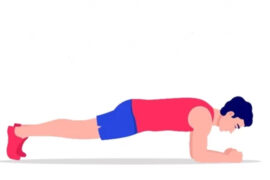The Push-Pull-Legs (PPL) workout split is a highly effective training method for enhancing gym routines and maximizing results. This approach divides workouts into three distinct categories—push, pull, and legs—providing a balanced focus on muscle groups while ensuring adequate recovery time for each set.
Specific Exercises for Each Category
- Push Day: This day focuses on exercises that engage the chest, shoulders, and triceps. A typical push day workout might start with the bench press to target the chest, followed by overhead presses for shoulder strength, and finished with tricep dips to enhance upper arm development. Performing these exercises with proper form, using high-quality equipment and expert guidance, ensures maximum benefits.
- Pull Day: On pull day, the emphasis is on the back and biceps. Recommended exercises include pull-ups, bent-over rows, and barbell curls. These exercises are excellent for building upper body strength, and the availability of a variety of weights and machines allows individuals to adjust intensity based on their fitness level.
- Leg Day: Leg day is dedicated to the lower body, targeting muscle groups like the quadriceps, hamstrings, glutes, and calves. Essential exercises include squats, deadlifts, and calf raises. Each of these movements contributes to building strength and endurance in the legs, ensuring safe and effective muscle development.
Structuring Your Weekly Workouts
To effectively implement the PPL routine, it’s crucial to organize workouts to maximize recovery and avoid overtraining. Bhadauria suggests a popular approach of training three days a week, focusing on one category per session. For example, you might schedule your workouts as follows:
- Monday: Push
- Wednesday: Pull
- Friday: Legs
This arrangement allows sufficient rest between sessions targeting the same muscle groups. For those who prefer more frequent workouts, a four-day or six-day split can be utilized. In a four-day regimen, alternate leg exercises with push and pull workouts, ensuring at least one rest day in between. A six-day split would involve performing each category twice a week, ensuring all muscle groups are engaged while allowing for one rest day. It’s essential to listen to your body and incorporate additional rest days as needed to prevent overtraining.
Key Benefits of the PPL Routine
The PPL workout split offers numerous advantages, particularly in promoting balanced muscle development. According to Akshay, managing director of FitClub, the structure of PPL—dividing workouts into push, pull, and leg categories—helps address common muscle imbalances associated with other training splits. This method is also flexible, allowing individuals to modify their weekly training frequency according to their fitness goals, making it suitable for both beginners and experienced lifters.
In summary, the Push-Pull-Legs workout split not only enhances workout efficiency but also fosters a comprehensive approach to strength training. By incorporating this method, individuals can optimize their fitness routines and potentially achieve faster gains while ensuring balanced muscle development and adequate recovery.
Disclaimer:
The information contained in this article is for educational and informational purposes only and is not intended as a health advice. We would ask you to consult a qualified professional or medical expert to gain additional knowledge before you choose to consume any product or perform any exercise.







